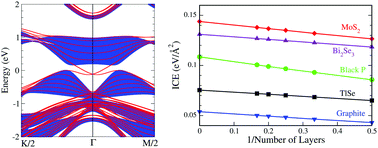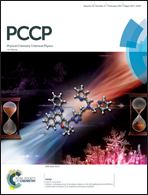Layer-separable and gap-tunable topological insulators
Abstract
The way in which states of a topological insulator (TI) transform from monolayer to bulk is an important issue for applications in spintronics. However, unlike graphite, most layered materials are difficult to exfoliate. Using first-principles calculations, we predict that thallium selenide (TlSe) will be a layered TI with rather weak interlayer coupling and thus it should be exfoliated easily. The evolution of the topological states can also be driven by doping with indium (In) atoms or applying lateral strains. A comparison of TlSe and β-InSe shows that the influences of structural and chemical components on the electronic structures determine the topological phase. Effects of van der Waals interactions in this TlSe material are also addressed.



 Please wait while we load your content...
Please wait while we load your content...